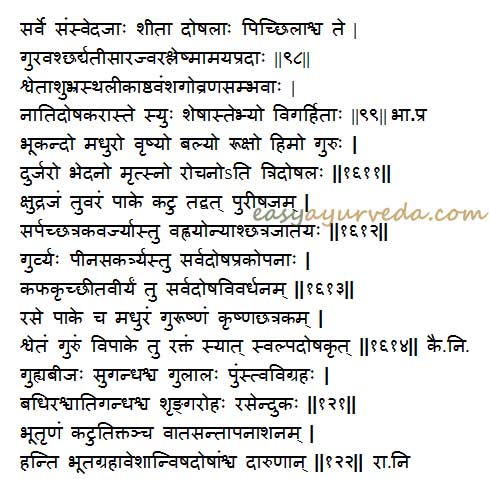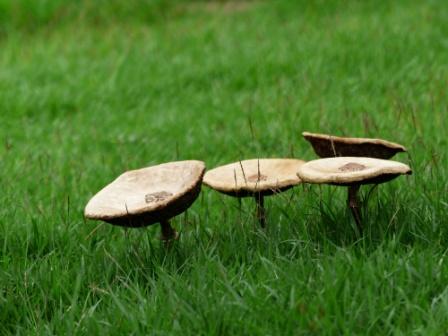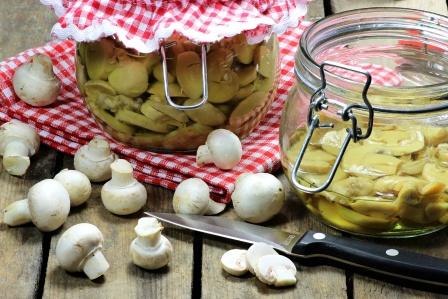Mushrooms: Uses, Remedies, Research, Side Effects
Mushroom Agaricus campestris is mentioned in Ayurveda for the treatment of fatigue, low sperm count. improving the sperm count. It is a good source of proteins, Vitamin B, K, C and D.

Latin name- Agaricus campestris Linn.
Family- Agaricaceae (Chatraka kula)
Synonyms: Psalliota campestris
Table of Contents
Morphology
Morphology of Agaricus campestris:
Chatraka belong to fungus kingdom. It grows wildly all over India near water source or in place of good moisture content in the soil. It is also cultivated for its commercial use and used in many cuisines. Mushroom has a weak mid part and an umbrella shaped top- hence the name Chatraka. Mushrooms are available in many shape and colors like pink, brown, pale white, white, black. Only some varieties are edible and some are poisonous.
Properties, part used, dosage
Agaricus campestris medicinal properties:
Rasa (Taste) – Madhura (Sweet)
Guna (Qualities) – Laghu (Light) Snigdha (Contain moisture), Picchila (Slimy)
Vipaka – Madhura (Undergoes Sweet taste after digestion)
Veerya (Potency) – Sheeta (Cold)
Karma (Actions) –Vatapitta shamaka (reduces vitiated vata and pitta dosha),
Kaphavardaka ( increase kapha dosha)

Part used- Whole fungus
Dosage- According to the requirement
Mushroom as per Bhojana Kutuhalam
Synonyms:
Bhusphota, Kavaka, Chatra, Bhumichatra and Sheelandraka. Mushrooms grow on earth, cow dung, wood, trees etc.
Edible Mushrooms: Mushrooms that are grown on clean ground, wood, bamboo and in cow pen are considered to be the best, and mushrooms with such habitat do not aggravate the doshas and which are otherwise does. According to vagbhata, Bhukanda variety of mushroom greatly aggravates the doshas, bhukanda is same as bhusphota and kavaka.
Chemical constituents
Chemical constituents of Agaricus campestris:
A protein (2.75%) supplement and an excellent source of vitamins of B complex. Vitamins K, C and D are also present. Though all the amino acids are reported to be present, the concentration of tryptophane is particularly low.
Uses, Indications
Uses of Chatraka:
- Chatraka is mainly used like vegetable in cuisines all over the world.
- Chatraka is boiled and is consumed with ghee to improve the sperm count.
- Mushroom is cut into small pieces and boiled in milk. This boiled milk is consumed in conditions of emaciation of the body and to improve the physical strength.
- In conditions of hyperacidity, mushroom is taken along with ghee or sugar candy.
- Little quantity of chatraka is taken with sugar candy in treating dry cough.
- Mushroom is fried with ghee and consumed to improve the sexual vigor.
Sanskrit verse

Ayurvedic description
Description of mushrooms as per Ayurveda:
White variety, clean, with the colour of bamboo, cow are good to eat. They do not increase Doshas, unlike other types of mushrooms.
Other mushrooms are heavy, can cause vomiting, diarrhea, fever and Kapha disorders.
Madhura – sweet
Vrushya – Aphrodisiac, improves sexual strength
Balya – improves strength and immunity
Rooksha – dry
Hima – coolant
Guru – heavy to digest
Durjara – heavy and hard to digest
Bhedana – may cause diarrhea
Tridoshala – can increase all three Doshas
The dwarf variety is astringent, Katu Vipaka (pungent taste conversion after digestion).
Black mushroom is sweet taste and Vipaka,
White musrhoom is guru – heavy to digest
Red mushroom can increase Doshas by small extent
Adverse effects
Some varieties of mushroom are poisonous and cause loss of sensation, diarrhea, nausea, vomiting, allergic rashes over the body, swollen lips, cramps of the muscles etc. Hence care should be taken to select the proper variety of mushroom.
Interaction with medicines, supplements
Can this be used while taking Homeopathic medicine?
Yes. This product does not react with homeopathic medicine.
Can
this medicine be continued while taking supplements like multivitamin tablets,
Omega 3 fatty acids etc?
Yes. Generally, this product goes well with most
of the dietary supplements. However, if you are taking more than one product
per day, please consult your doctor for an opinion.
With western
medicines
Seek your
doctor’s advice if you are taking this product along with other western
(allopathic / modern) medicines. Some Ayurvedic herbs can interact with modern
medicine.
If both Ayurvedic and allopathic medicines are advised together, then it is
best to take Allopathic medicine first, wait for 30 minutes and then take the
Ayurvedic medicine.

Research
Research articles related to Agaricus campestris:
Anti- oxidant potential: The chemical, bioactive, and antioxidant potential of twenty wild culinary mushroom species being consumed by the people of northern Himalayan regions has been evaluated for the first time in the present study. Although differences were observed in the net values of individual species all the species were found to be rich in protein and carbohydrates and low in fat. Glucose was found to be the major monosaccharide. Predominance of UFA (65–70%) over SFA (30–35%) was observed in all the species with considerable amounts of other bioactive compounds. All the species showed higher effectiveness for antioxidant capacities.
Anti- bacterial study: Antibacterial activity of methanolic and acetone extracts of Agaricus bisporus were determined in-vitro against two pathogenic bacteria Escherichia coli and Staphylococcus aureus following agar well diffusion method using different concentrations (25, 50, 75 and 100%). Methanolic and acetone extracts showed potent antibacterial activity against tested bacteria. Methanolic extract showed maximum inhibitory effect against growth of each of the test bacterium.

Classical categorization
Charaka Samhita – Shaka varga
Bhela Samhita – Shaka varg
Bhavaprakasha Nighantu – Shaka varga, Samsvedaja Shaka
Adarsha Nighantu – Bhuchhatrakadi varga
Kaiyyadeva Nighantu – Aushada varga
Madana Pala Nighantu – Shaka varga
Dravya Guna Vijnaana – Samsvedaja Shaka varga
Raja Nighantu – Shalmalyadi Varga
Scientific classification
Kingdom: Fungi
Division: Basidiomycota
Class: Agaricomycetes
Order: Agaricales
Family: Agaricaceae
Genus: Agaricus
Species: A. campestris
Sanskrit synonyms
Bhumi sphota, Prithvi sphota- Emerges from the earth
Shilindra- Emerges from the stones
Kutumbaka – appears in bunches
Bhumi chatra, Bhu Chatra- Umbrella shaped structure emerging from earth
Sarpa Chatra, Bhumi kanda, Malatruna, Sumali, Bhukanda, Prithvi kanda, Rohisha,
Ayurvedic references
Reference of Mushroom in Ayurveda:
In Charaka Samhita, Sutrasthana, 27th Chapter, 123 verse,
In addition to Sarpachatraka (a type of mushroom), there are many other types of Mushroom – Chatra (Psalliota Campestris Fr) which are cold in potency, heavy and sweet in taste. They aggravate Vata.
Bhela Samhitha Sutrasthana 28th chapter under shaka varga 24-26th shloka. Here he has mentioned about different types like palala jata Chhatraka , venu Chhatraka, gomaya chhatraka and their respective gunas also mentioned.
In Bhela Samhitha chikitsa sthana 2nd chapter 35th shloka. In jwara chikitsa, chhatraka is mentioned in a formulation called Mahapaishashika ghrata where it is an ingredient.
Types
Types of mushrooms as per Ayurveda:
According to Bhela samhitha:
- Palala jatha chhatraka
- Gomaya chhatraka
- Venu chhatraka
According to Kaiyyadeva nighantu:
- Krishna chhatraka
- Sarpa chhatraka
- Shwetha chhatraka
- Raktha chhatraka
Some other references: White, Red, Black
Savisha chhatraka – poisonous
Nirvisha chhatraka – non poisonous
Vernacular names
Names in different languages:
Hindi name- Khumi, Gucchi, Chhata, Chhatona, Phenchhatar, Sanpakichhatri
English name- Mushroom
Arabic name- Fitar
Assamese name- Kalphula
Bengali name- Chhata, Chhatakuda, Bhuchhati
Gujarathi name- Viladino Topp, Kagdanachhatra,Mindadnivali
Marathi name- Alambi, Alombe, Kalambe, Khumba
Kannada name- Anabe
Tamil name- Naikkodai
Telugu name- Kukkagodugu
Catalan name – Bolet decam,Bolet comu
Chamba name – Moksha,Mopsha
French name – Psalliote champetre
German name – Brachpitz,Champigon
Hausa – Namanangulu, Namankassa
Kashmir name – Manskhel
Konkani name – Kamila
Persian name – Chatrimar
Portuguese name – Cogumelo
Punjabi name – Bleophore
Spanish name – Agarico camperino
Tulu – Lambu, Kallambu
Varieties of mushrooms
Mushrooms, shiitake, raw
Taste – mild sweet
Properties – light (lowers cholesterol, low in calories)
Potency – cold
After digestion taste transformation ( Vipaka ) – sweet
Effect on Doshas
Vata balancing (promote bone health)
Pitta balancing (due to cold potency)
Kapha nourishing (low calorific value)
Mushrooms, shiitake, stir-fried
Taste – mild sweet
Properties – light (lowers cholesterol, low in calories)
Potency – cold
After digestion taste transformation ( Vipaka ) – sweet
Effect on Doshas
Vata balancing (promote bone health)
Pitta balancing (due to cold potency)
Kapha neutral (raw is Kapha nourishing, stir-frying makes it further light)
Mushrooms, shiitake, dried
Taste – mild sweet
Properties – heavy (due to increased nutrient concentration when dried)
Potency – cold
After digestion taste transformation ( Vipaka ) – sweet
Effect on Doshas
Vata balancing (promote bone health)
Pitta balancing (due to cold potency)
Kapha increasing (due to increased nutrient concentration)
Mushrooms, shiitake, cooked, without salt
Taste – mild sweet
Properties – light (lowers cholesterol, low in calories)
Potency – cold
After digestion taste transformation ( Vipaka ) – sweet
Effect on Doshas
Vata balancing (promote bone health)
Pitta balancing (due to cold potency)
Kapha nourishing (less Kapha nourishing than raw as it is cooked)
Mushrooms, shiitake, cooked, with salt
Taste – mild sweet, and salty
Properties – light (lowers cholesterol, low in calories)
Potency – not very cold (salt is hot in potency)
After digestion taste transformation ( Vipaka ) – sweet
Effect on Doshas
Vata balancing (promote bone health)
Pitta nourishing (salt is Pittakara)
Kapha nourishing (less Kapha nourishing than raw as it is cooked)
Mushrooms, Chanterelle, raw
Taste – mild sweet and pungent
Properties – heavy (hard to digest)
Potency – cold
After digestion taste transformation ( Vipaka ) – sweet
Effect on Doshas
Vata balancing (useful in migraine and headaches)
Pitta balancing (helps reduce skin inflammation, redness, burning of skin)
Kapha nourishing (aids proper growth due to copper)
Mushrooms, morel, raw
Taste – sweet
Properties – heavy
Potency – hot
After digestion taste transformation ( Vipaka ) – sweet
Effect on Doshas
Vata balancing (due to high vitamin D content, relieves joint pain)
Pitta nourishing (rich in iron, supports eye health)
Kapha nourishing (improves immunity)
Mushrooms, portabella, raw
Taste – sweet
Properties – light, unctuous, slimy
Potency – cold
After digestion taste transformation ( Vipaka ) – sweet
Effect on Doshas
Vata balancing
Pitta balancing
Kapha increasing
Mushrooms, portabella, grilled
Common mushroom
Taste – sweet
Properties – light, less unctuous (raw is unctuous and slimy which deceases on grilling)
Potency – not very cold
After digestion taste transformation ( Vipaka ) – sweet
Effect on Doshas
Vata balancing
Pitta balancing
Kapha nourishing (due to decreased unctuousness and cold potency)
Mushrooms, white, raw
Taste – sweet
Properties – light, unctuous, slimy
Potency – cold
After digestion taste transformation ( Vipaka ) – sweet
Effect on Doshas
Vata balancing
Pitta balancing
Kapha increasing
Mushrooms, white, stir-fried
Taste
– sweet
Properties – light, unctuous, slimy
Potency – not very cold (as it is fried)
After digestion taste transformation ( Vipaka ) – sweet
Effect on Doshas
Vata balancing
Pitta balancing
Kapha nourishing (as it becomes lighter on frying)
Mushrooms, white, cooked, boiled, drained, without salt
Taste – sweet
Properties – light, unctuous, slimy
Potency – cold
After digestion taste transformation ( Vipaka ) – sweet
Effect on Doshas
Vata balancing
Pitta balancing
Kapha nourishing (as it becomes less Kapha increasing when cooked)
Mushrooms, white, cooked, boiled, drained, with salt
Taste – sweet, slightly salty
Properties – light, unctuous, slimy
Potency – not very cold (salt is hot in potency)
After digestion taste transformation ( Vipaka ) – sweet
Effect on Doshas
Vata balancing
Pitta nourishing (salt is Pittakara)
Kapha nourishing (as it becomes less Kapha increasing when cooked)
Mushrooms, canned, drained solids
Taste – sweet
Properties – light, unctuous, slimy
Potency – cold
After digestion taste transformation ( Vipaka ) – sweet
Effect on Doshas
Vata balancing
Pitta balancing
Kapha nourishing (as it becomes less Kapha increasing when heat processed)
Mushrooms, brown, italian, or crimini, raw
Taste – sweet
Properties – light, unctuous, slimy
Potency – cold
After digestion taste transformation ( Vipaka ) – sweet
Effect on Doshas
Vata balancing
Pitta balancing
Kapha increasing
Mushrooms, brown, italian, or crimini, exposed to ultraviolet light, raw
When exposed to UV light, they can generate nutritionally relevant amounts of vitamin D.
Taste – sweet
Properties – light, unctuous, slimy
Potency – cold
After digestion taste transformation ( Vipaka ) – sweet
Effect on Doshas
Vata balancing (more Vata balancing due to high Vitamin D content)
Pitta balancing
Kapha increasing
Mushroom, white, exposed to ultraviolet light, raw
Taste – sweet
Properties – light, unctuous, slimy
Potency – cold
After digestion taste transformation ( Vipaka ) – sweet
Effect on Doshas
Vata balancing (more Vata balancing due to high Vitamin D content)
Pitta balancing
Kapha increasing
Mushrooms, portabella, exposed to UV light, grilled
Taste – sweet
Properties – light, unctuous, slimy
Potency – cold
After digestion taste transformation ( Vipaka ) – sweet
Effect on Doshas
Vata balancing (more Vata balancing due to high Vitamin D content)
Pitta balancing
Kapha increasing
Mushrooms, portabella, exposed to ultraviolet light, raw
Taste – sweet
Properties – light, unctuous, slimy
Potency – cold
After digestion taste transformation ( Vipaka ) – sweet
Effect on Doshas
Vata balancing (more Vata balancing as it is exposed to UV light which increases Vitamin D)
Pitta balancing
Kapha increasing
Mushrooms, oyster, raw
Taste – mild sweet
Properties – light (lowers cholesterol, low in calories)
Potency – cold
After digestion taste transformation ( Vipaka ) – sweet
Effect on Doshas
Vata balancing (promote bone health)
Pitta balancing (due to cold potency)
Kapha nourishing (low calorific value)
Fungi, Cloud ears, dried
Taste – mild sweet
Properties – heavy (increased nutrient concentration as it is dried)
Potency – Cold
After digestion taste transformation ( Vipaka ) – Sweet
Effect on Doshas
Vata balancing (due to heaviness)
Pitta balancing (due to calcium and magnesium content)
Kapha increasing (due to heaviness)
Mushrooms, straw, canned, drained solids
Taste – mild sweet
Properties – light (lowers cholesterol, low in calories)
Potency – cold
After digestion taste transformation ( Vipaka ) – sweet
Effect on Doshas
Vata balancing (promote bone health)
Pitta balancing (due to cold potency)
Kapha nourishing (low calorific value)
Author: Dr.B.K.Prashanth M.D (Ayu), Ph.D
E mail: [email protected]
Sthanika karma (Action on different system)
Reproductive system -Aphrodisiac, indicated in Oligospermia
Satmikarana – Promote strength and bulk of the body
Mushrooms as per Sushruta Acharya
In Sushruta Sutrasthana 1st chapter – Vedotpatti Adhyaya, 29th Shloka, Sthavara classification – Oshadhi is mentioned, which is explained as Phala Pakanishta. The Nibandha Sangraha commentary explains that – some authors classify Phala Paka nishta category as Phala Nishta and Paka Nishta. Chatraka (mushrooms) fall into Paka Nishta category, अन्ये तु निष्ठाशब्दं प्रत्येकं सम्बध्नन्ति, फलनिष्ठाः पाकनिष्ठा इति; तत्र फलनिष्ठाः शालितिलकुलत्थादयः, पाकनिष्ठाः कवकादयः; कवकश्छत्रक उच्यते|
In Sushruta Sutrasthana 20th chapter, Hita Ahita Adhyaya, 8th Shloka, Acharya Susrutha explains kavaka (mushroom) should not be consumed with milk. This combination acts like poison.
वल्लीफल कवक करीराम्लफल लवण कुलत्थ पिण्याक दधि तैल विरोहि पिष्ट शुष्कशाकाजाविकमांस मद्य जाम्बव चिलिचिम मत्स्य गोधा वराहांश्च नैकध्यमश्नीयात् पयसा ||८||
In Sushruta Sutrasthana 46th chapter, Anna pana Vidhi Adhyaya, 290th Shloka, Kshavaka (mushroom) is explained as Kaphakara – increases Kapha Dosha
Srushta Mutra Pureesha – increases volume of urine and feces.
क्षवककुलेवरवंशकरीरप्रभृतीनि कफकराणि सृष्टमूत्रपुरीषाणि च ||२९०||











2 comments
dr tejwant singh nanda
mushroom are well documented in charaka rasayan adhyaya as Indrokat rasayan chhatra and atichhatra.
they are also mentioned in shushrut samhita as soma like rasayan.
Dr J V Hebbar MD(Ayu)Author
Thank you for the information. 🙂